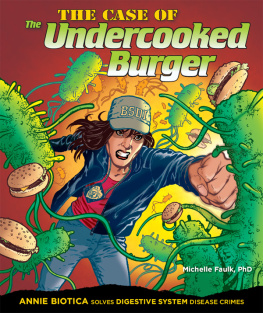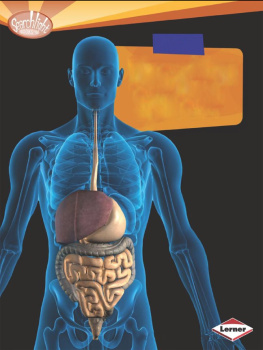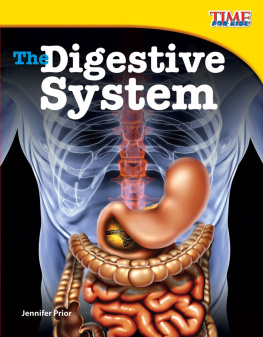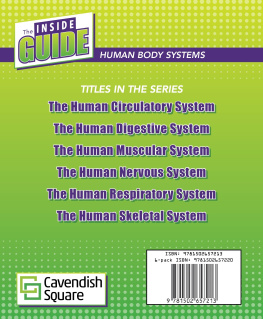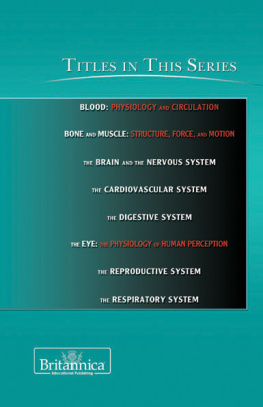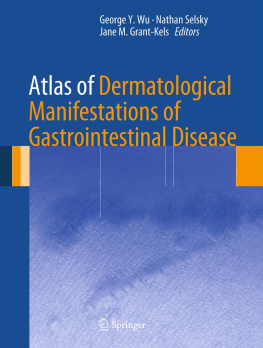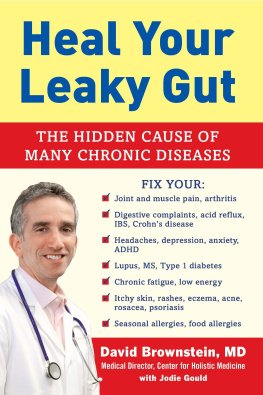
What is the Guilty Germ?
What do you get when you combine evil microbes trying to harm the digestive system and a super detective skilled at Body System Disease Investigations? You get crime-solving super sleuth Annie Biotica! Join Annie's team: Read the case, check out a line-up of disease suspects, test the body system for infection, and help Annie crack the case! These engaging and easy-to-read books use the scientific method to decipher symptoms and diagnose and treat diseases. Some cases must be solved by you!
About the Author
Michelle Faulk has a PhD in virology and microbiology from the University of Pittsburgh School of Medicine. She has worked as a medical researcher, teacher, and editor, and is currently an author.
THE CASE OF
the
Undercooked Burger
Eleven-year-old Manny and his family went to the beach for summer vacation. On their first night they grilled hamburgers. As Mannys mother mixed the meat and bread crumbs he watched over his four-year-old sister Abelena. Everyone enjoyed dinner because the burgers were juicy and delicious. Unfortunately, the beach vacation came to a grinding halt several days later when everyone got sick.

Image Credit: Shutterstock.com
I met Manny and his family at the hospital three days into their vacation. These were their symptoms:
- Severe stomach cramps
- Bloody diarrhea
- Manny and his sister had minor fevers
The familys symptoms all pointed toward a digestive system attack. The suspects could be bacterial, viral, or fungal. I questioned the family on everything they had eaten in the last five days. When I heard about hamburgers cooked rare I had my suspect. To a health crimes investigator, ground beef and the symptom of bloody diarrhea means Escherichia coli O157:H7.
This bad guy has been on the major health crimes most wanted list for years. Many members of the E. coli family are law-abiding bacteria, but E. coli O157:H7 has gone over to the dark side.

Image Credit: Illustrations by Jeff Weigel (www.jeffweigel.com)
Once inside the body this violent microbe clings to our cells and invades our tissues. It then makes a toxin that kills our cells. All of this destruction causes the trademark symptom of bloody diarrhea.
E. coli O157:H7 can enter victims in unpasteurized milk and raw vegetables. It often hitches a ride in ground beef. Cows do not become sick like people so no one knows O157:H7 is hiding in them. Contaminated ground beef must be cooked thoroughly to kill the E. coli . If not, serious disease occurs. Some doctors believe it only takes ten bacteria to make you sick.

Image Credit: Photo Researchers, Inc.: A. Barry Dowsett
I took stool samples from Mannys family. I spread each sample on an agar plate. I knew the samples would contain many normal bacteria so I used a special agar. Sorbital MacConkey Agar contains the sugar sorbitol. When O157:H7 munch on sorbitol they produce acids. Chemicals in the agar will show O157:H7 as colorless and other bacteria as pink.
Result: Colorless bacteria were present on all four agar plates.

Colorless colonies of E. coli O157:H7 grew on the agar for all members of the family.
I took the colorless bacteria from the Test One agar plates. I then performed the PCR test to see if these bacteria were really E. coli O157:H7. The PCR test looks for the DNA inside the E. coli. PCR is very specific and sensitive.
Result: E. coli O157:H7 was positively identified inside each family member.

Image Credit: Shutterstock.com
The Polymerase Chain Reaction test was positive
E. coli O157:H7 was found guilty on all counts of attacking Mannys family.

Image Credit: Photo Researchers, Inc.: A. Barry Dowsett
CONVICTED GERM: E. coli
E. coli O157:H7 poisoning is a very difficult disease to cure. Medicines that stop diarrhea can help O157:H7 stay inside the victim. They also increase the risk of dehydration. Antibiotics do not seem to help. All we could do was watch over Mannys family while their immune systems fought the O157:H7.
Manny and his parents recovered from their attacks. Abelena became sicker. Seven days after her symptoms first appeared she was weak
and had trouble urinating. Abelena had developed hemolytic uremic syndrome (HUS).

Image Credit: Illustrations by Jeff Weigel (www.jeffweigel.com)
On the left is the tissue of a healthy kidney.
On the right is the tissue of Abelenas kidney.
The blue color shows the damaged areas.
About 5 to 10 percent of young children attacked byE. coli O157:H7 develop HUS. This happens when the O157:H7 toxin convinces the immune system to flood the body with chemicals. These chemicals help fight invaders. But releasing too many of these chemicals at once damages the kidneys. A kidney transplant saved Abelenas life.

Image Credit: Shutterstock.com
THE CASE OF
the
Stowaway Worm
Thirteen-year-old Vidisha visited her grandmother for three months in Louisiana. She loved the food! When she returned home her mother commented on how Vidisha had gained a cute little potbelly. Unfortunately, that cute pot belly turned out to be a health crime.

Image Credit: Shutterstock.com
A few weeks after being home Vidisha was taken to the doctor.
These were her symptoms:
- Abdominal pains
- Fever
- Diarrhea
This seemed like a misdemeanor stomach virus attack. Her doctor sent her home. Two weeks later Vidisha was worse. Now she couldnt go to the bathroom at all. I met Vidisha and her family at the ER.
As I was examining Vidisha she began to vomit. I quickly handed her a plastic bowl. When she was done I left the room with the bowl. I didnt want Vidisha to see the large white worm she had thrown up.

Next page
